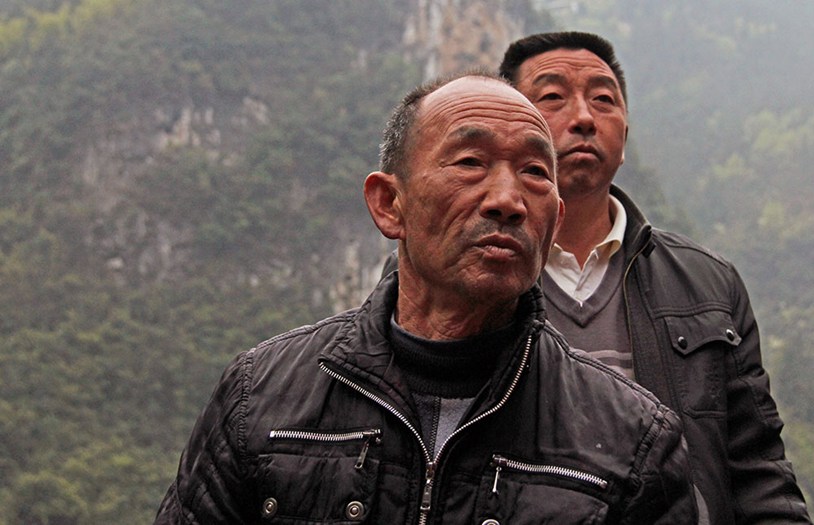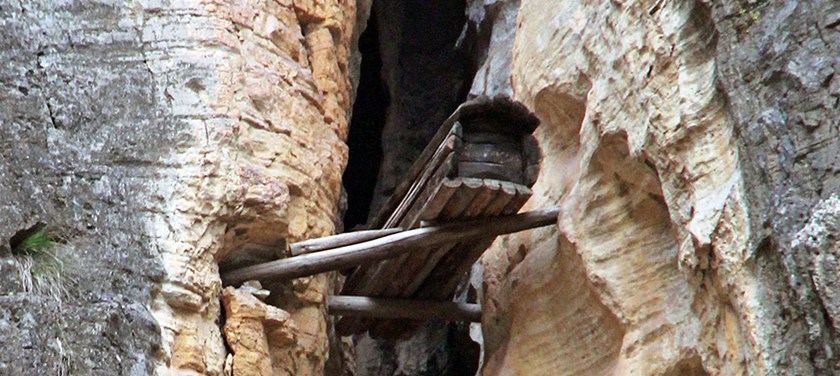BADONG, CHINA - Emily is singing. Her sweet soprano voice floats from the bow of a traditional sampan and through the dewy air as our sturdy little vessel rides the gentle Yangtze River waves.
In the stern, our captain chimes in — his baritone voice adding authority to the traditional Tujia folk song they are singing.
You come here looking to explore China’s greatest river and the mega-cities, mighty gorges and treasured history that line its shores, but quickly realize what makes this crucial waterway — the longest in Asia at 6,418 kilometres — so special, are the people who live along its banks.
Emily, our guide and a Tujia descendent, steals my heart on the first day of a four-day, five-night Yangtze River cruise that passes a troika of mythical peaks known as the Three Gorges (Wu, Qutang and Ziing), the world’s largest city, Chongqing, where 29 million people live in a forest of high-rise condos, and the world’s largest hydro-electric project, the Three Gorges Dam.
Everything, it seems, is the “world’s biggest” in the world’s most-populous country.
There’s no doubting the Yangtze’s importance to China. It truly is the lifeblood of this remarkable nation. Much of China’s history, culture and prosperity flow through this watery artery that starts in the Qinghai-Tibet Plateau and snakes through the belly of China before exiting into the East China Sea at Shanghai.
The massive cargo ships navigating the river they call Chang Jiang in Mandarin remind me that the Yangtze River Delta generates as much as 20 per cent of China’s gross national product and almost 40 per cent of China’s 1.3 billion people rely on the river for survival.
The Yangtze is fed by many tributaries but none is more famous or fascinating than the Shennong Stream, which enters the river from the Wu Gorge, the most spectacular of the Three Gorges.

Above: The Shennong Stream is one of the most-visited places in all of China.
Emily’s Tujia ancestors have lived and thrived along the Shennong Stream from the time of the Han Dynasty (206 BC to 220 AD) — making a living farming the fertile land and helping pull tourist boats like ours through the shallow, narrow stream.
Before the Three Gorges Dam was built, visitors to the stream were rewarded with a wild ride through a narrow passage sandwiched between almost vertical limestone cliffs. But the dam caused water levels to rise 155 metres and now most of the beautiful gorge has been submerged.
What’s left, however, is still pretty spectacular.
Every minute of this cruise has been awe-inspiring, but the four-hour voyage into the Shannong Steam is my favourite part.
Emily’s face beams with pride when she tells us stories about her homeland area and the animals who inhabit it.
“Watch! We may see some macaque monkeys playing on shore,” the lovely young lady dressed in traditional Tujia garb tells her attentive listeners wrapped in orange life jackets.
Unfortunately, the monkeys are a no-show. But there are lots of birds, including parrots, who make the thick forest their home.
The rocky cliffs that jut skyward from the shore are lined with thick vegetation and wild flowers and we crane our necks to get a glimpse of the famed “hanging coffins” wedged precariously on polls between the cliffs.
Emily says they were placed there in ancient times (between 200 BC and 500 AD). No one is quite sure why the people of the day treated their dead in this manner, or even how they were able to climb the smooth-faced surfaces to suspend the coffins between the cliffs. But the coffins, many of which were lost in the flooding for the mega-dam, supply lots of Kodak moments for our group.


Left: The river people are a heard-working lot. Right: The hanging coffins attract a lot of attention.
The sampans, which are called pea-pod boats by the locals because of their shape, have a crew of five — usually local farmers or peasants who do this to supplement their meagre earnings. Three rowers stand in the front at their oars, and one rower and the captain at the back. The captain guides the sampan with his rudder while 10 fascinated passengers look on.
The chiseled, weathered faces of the muscular crew are testament to the back-breaking effort it takes to control the boats. The gap-toothed smiles they flash when we ask to take their photographs are warm and genuine.
Before the Yangtze’s water level rose to make way for the dam, there were many shallow points along the Shennong where tourist boats would often get stuck on sandbars. Men standing on shore, known as “boat trackers,” would pull the boats off the sandbars using long ropes. Emily says the ropes are made of braided bamboo and are soaked in water to make them very strong.
In ancient times, the trackers would perform their duties naked — partly because of the summer heat but mostly because they didn’t want to get their clothes wet. Today, because there are few shallow points in the stream, there is really no need for the trackers but still they latch onto the sampans with their ropes to give tourists a sense of history and to earn tips. They’re all fully clothed, in case you were wondering. The songs, Emily tells us, are meant to encourage the trackers to pull harder.
When we return to the landing where the sampans picked us up, the crew and trackers stow there gear, bid us farewell and we watch from the deck of our luxury cruise ship, the Yangtze 2, as they climb the sharp hills in the direction of their homes and farms and disappear over the horizon.
Our trip back in time along the Shennong Stream lasted just four hours and introduced us to an ancient way of life and people who left a lasting impression on all of us.
Information
Air Canada offers direct daily flights to Beijing and Shanghai from Toronto and Vancouver / Tour East Holidays offers several tours to China that include a Yangtze River cruise. For more information, go to
www.toureast.com / Yangtze River cruises do not operate between December to February each year - the best time to go is in the spring or fall.
About the Author
A former award-winning editor at the Toronto Star, Gale has travelled extensively throughout Europe, Asia and North America and will share her unique style of writing and photography with TraveLife readers. Gale’s favourite places I the world include India, China, Thailand, Paris, Scotland and London.